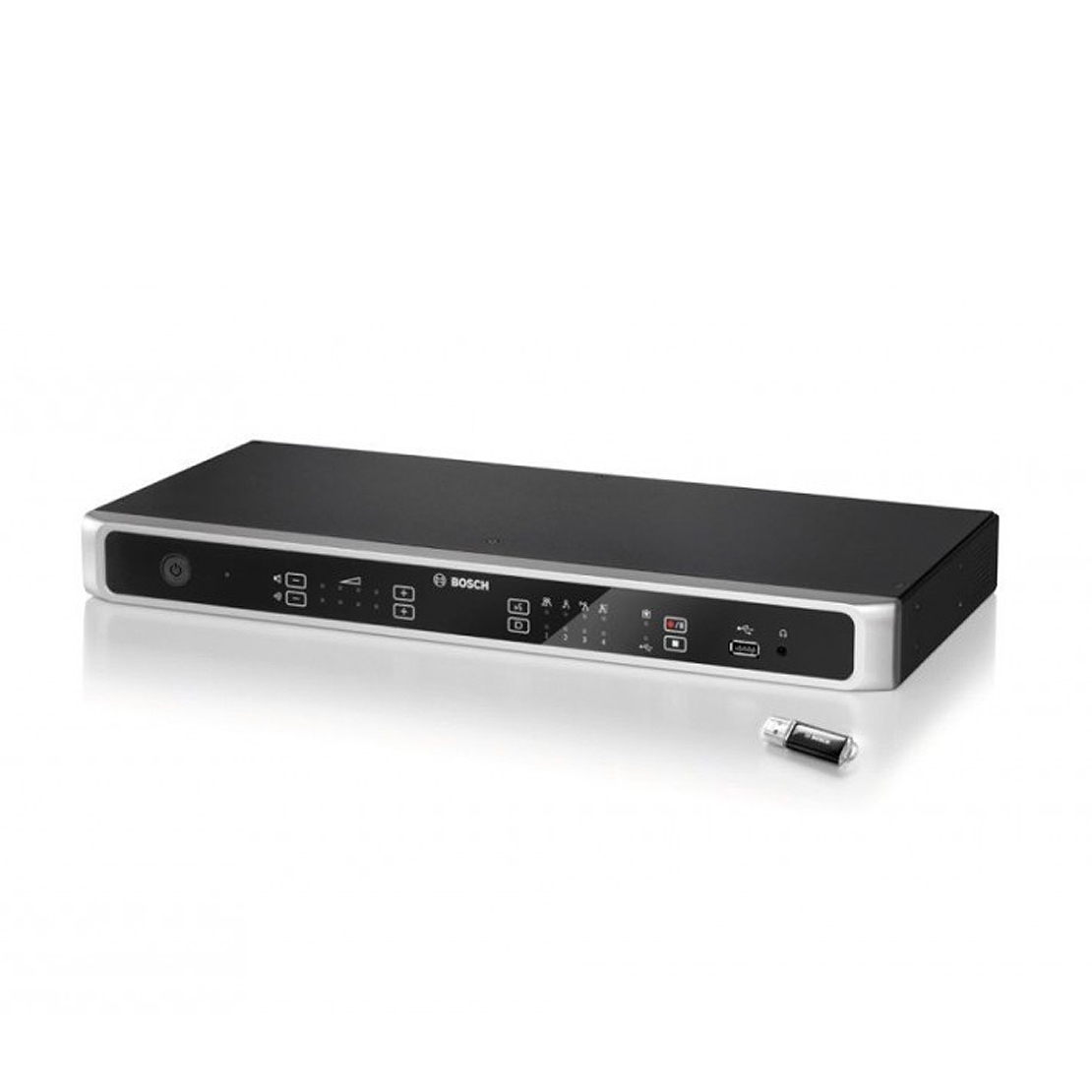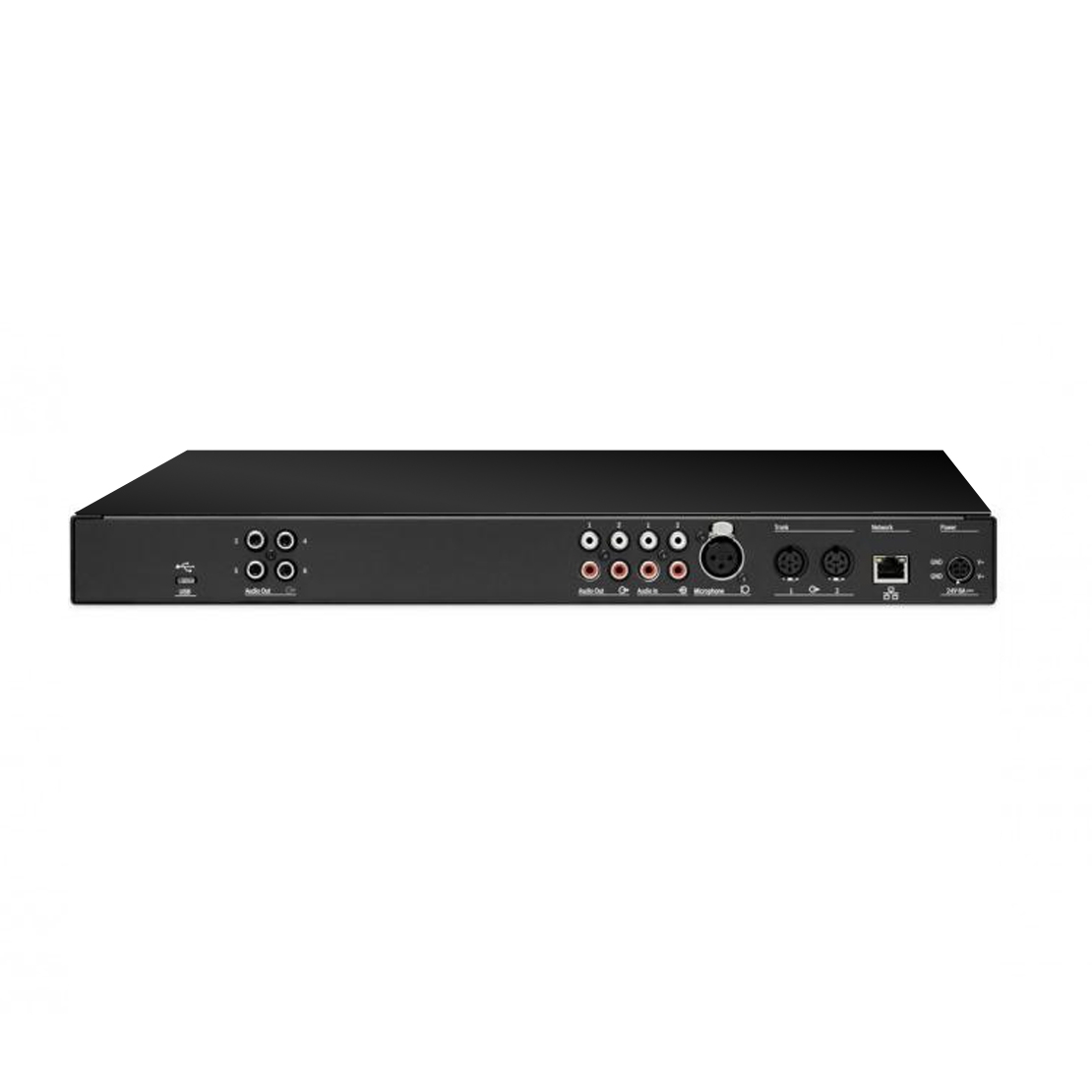Plug-and-play functionality
The plug-and-play functionality of the Control Unit allows Discussion Devices and system cameras to be conveniently connected to and removed from the system as required. A power down or restart of the system is not necessary, which ensures for fast installation and reconfiguration times.
Built-in MP3 recorder
The built‑in recorder can record discussions in the MP3 format to the internal memory or a USB memory stick with a maximum capacity of 128 GB, which can store up to 4,000 hours discussion. To ensure that discussions are manageable, recordings are divided into files of one hour’s duration containing the date and time of recording.
Built-in monitor loudspeaker
The built-in loudspeaker and headphone socket allows for:
– live monitoring of a meeting from the CSD-CURD Control Unit.
– prelistening of audio files before replaying them to the Floor.
Built-in Digital Acoustic Feedback Suppression (DAFS)
The built-in Digital Acoustic Feedback Suppression (DAFS) feature suppresses acoustic feedback (also known as ‘howling’ or ‘Larsen effect’). This improves speech ntelligibility by allowing the speaker volume to be set as loud as required without any risk of acoustic feedback.
Controls and Indicators
- Mains power on/off button with red/green LED indicator. Red indicates that the system is off (no power available from the external power supply). Green indicates that the system is active (Control Unit and all connected devices powered up).
- Plus/minus buttons for setting the volume range of all connected Discussion Devices – used in combination with LED indicators for showing the selected volume
- Microphone-mode button for selecting one of the microphone operating modes – used in combination with LED indicators for showing the selected mode
- Open microphone button for selecting the number of microphones that can be activated at the same time – used in combination with LED indicators for showing the number of activated microphones
Web browser control
Basic and advanced system settings, including microphone management and recording options, can be easily viewed and managed/configured by using a web browser in combination with a tablet, laptop or PC. Changes made in the web browser are automatically updated in the Control Unit and vice‑versa. An option in the web browser allows the Control Unit and connected devices to be automatically shut down for energy saving purposes. To prevent unauthorized access to system settings, separate login rights are available for operators and technicians.
Open microphone control
The maximum number of microphones that can be activated by pressing the microphone buttons on the Discussion Devices can be selected with the ‘Number of Open Microphones’ (NOM) button on the Control Unit. A maximum of four microphones can be selected on the Control Unit. This can be further extended to 10 microphones in the web browser.
Discussion control
One of the following microphone modes can be selected by pressing the ‘Microphone-mode’ button on the front of the Control Unit
Interface for peripheral equipment
The Control Unit enables the following equipment to be connected to the CCS 1000 Digital Discussion System
Connections
Front of unit
- 1 x 3.5 mm (0.14 in) stereo headphone socket
- 1 x USB connector
Rear of unit:
- 1 x micro USB connector
- 4 x RCA outputs for individual microphone recording,
e.g. for recording individual speakers in a courtroom - 1 x 4‑pole circular female 24 VDC power input
connector - 2 x 6‑pole circular female connectors for loop-through
connection of 40 Discussion Devices per trunk - 1 x RJ45 Ethernet connector for communication with web browser application
- 1 x 3‑pole XLR female microphone input connector with phantom supply
- 1 x RCA input for ‘Floor’ (i.e. external audio source, such as a CD or DVD
player) - 1 x RCA output for a ‘sound reinforcement system
- 1 x RCA input/output for either
– ‘Recorder’ for connecting an external
recorder‘Recorder’ for connecting an external recorder
– ‘Insertion’ for connecting an external audio processor
–
‘Telephone/mix minus’ for allowing a remote participant to join a discussion via
a telephone/ video connection
–
‘Participant loudspeaker’ for distributing the participant loudspeaker signal to
a sound reinforcement system



